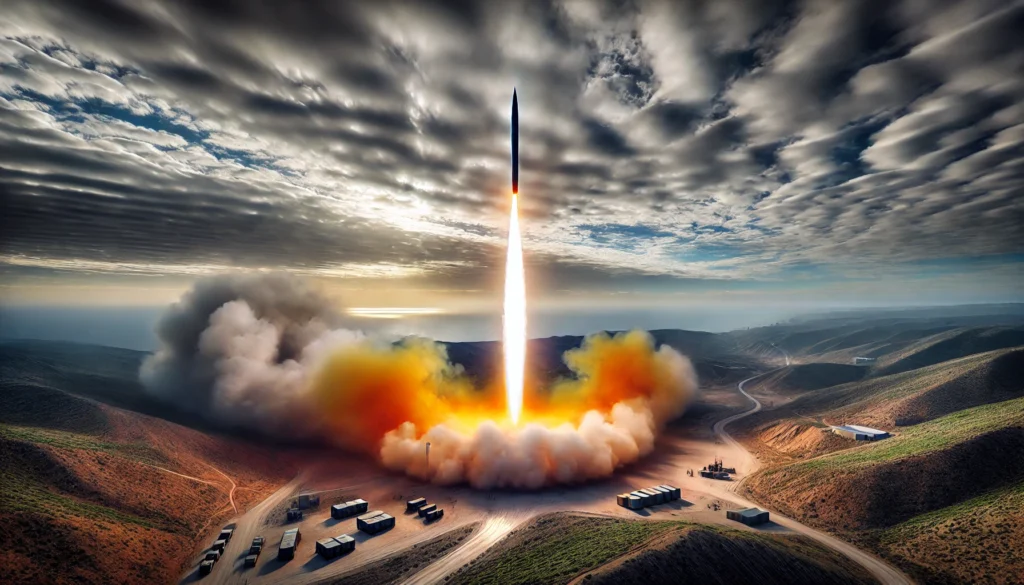Russia unleashes hypersonic ‘Oreshnik’ missile in Ukraine: What it means for NATO
Russian President Vladimir Putin has disclosed that Russia recently deployed a new mid-range ballistic missile, named “Oreshnik,” against Ukraine, intensifying the already fraught conflict. In an address to the nation on November 21, Putin detailed that the missile, equipped with a non-nuclear hypersonic warhead, struck what he described as a key military-industrial target in Dnipro. This development highlights Moscow’s ongoing strategy to showcase advanced military capabilities amid escalating tensions with NATO and Western allies.
The Oreshnik missile, according to Putin, is designed to operate at speeds exceeding Mach 10, a velocity that renders most current missile defense systems ineffective. Analysts suggest this is a calculated demonstration by Russia of its ability to outpace Western technological advancements in defence. The Russian president also made pointed remarks about the inadequacy of air defence systems developed by NATO allies, framing the missile deployment as a strategic response to recent Western-supplied weapons delivered to Ukraine.

A warning to the West?
This escalation follows a series of significant Ukrainian strikes on Russian soil, including attacks in the Bryansk and Kursk regions. These retaliatory measures, bolstered by advanced Western missile systems, have reportedly caused concern within the Kremlin. Putin used his speech to issue a stark warning to NATO, describing the missile strike as a reminder of Russia’s operational superiority and readiness to respond to perceived provocations. While his comments were carefully framed to avoid direct threats, the subtext suggested that Russia could further leverage its hypersonic arsenal if its security thresholds are crossed.
Experts interpret the deployment of the Oreshnik missile as a dual-purpose move: not only a tactical strike within the conflict but also a broader geopolitical message to NATO. Military analysts argue that by deploying cutting-edge hypersonic technology, Russia is asserting its military dominance and seeking to deter further Western involvement in Ukraine.
Ukraine’s response and global concerns
Ukrainian President Volodymyr Zelenskyy reacted swiftly, condemning the attack as an unacceptable act of aggression and a violation of international norms. Zelenskyy framed the missile strike as an attempt by Russia to test its latest weapons systems in live combat scenarios, characterising Ukraine as a battleground for Moscow’s military ambitions. He also renewed calls for increased international support, urging allies to bolster defensive aid as Ukraine confronts what he described as a growing array of advanced threats.
The global response to Russia’s deployment of the Oreshnik missile has been marked by concern over its potential implications for regional and global security. Diplomats from NATO member states have emphasised the need for restraint, warning that any further escalation could heighten the risk of broader conflict. Some experts suggest the strike was timed to remind NATO of the risks associated with direct military engagement, particularly as discussions around Ukraine’s potential NATO membership remain a contentious issue.
Implications for modern warfare
The use of the Oreshnik missile underscores the shifting dynamics of modern warfare, where hypersonic technology is rapidly becoming a central focus for military powers. Russia’s investment in this area reflects its strategy to maintain a competitive edge over NATO and other Western nations. However, the deployment raises critical questions about the balance of power and the effectiveness of existing missile defence systems in countering such advancements.
As the conflict between Russia and Ukraine intensifies, the introduction of hypersonic weapons like the Oreshnik sets a troubling precedent. The move signals not only an escalation in hostilities but also a new phase in the technological arms race, with far-reaching consequences for global security.
Discover more from Business-News-Today.com
Subscribe to get the latest posts sent to your email.

